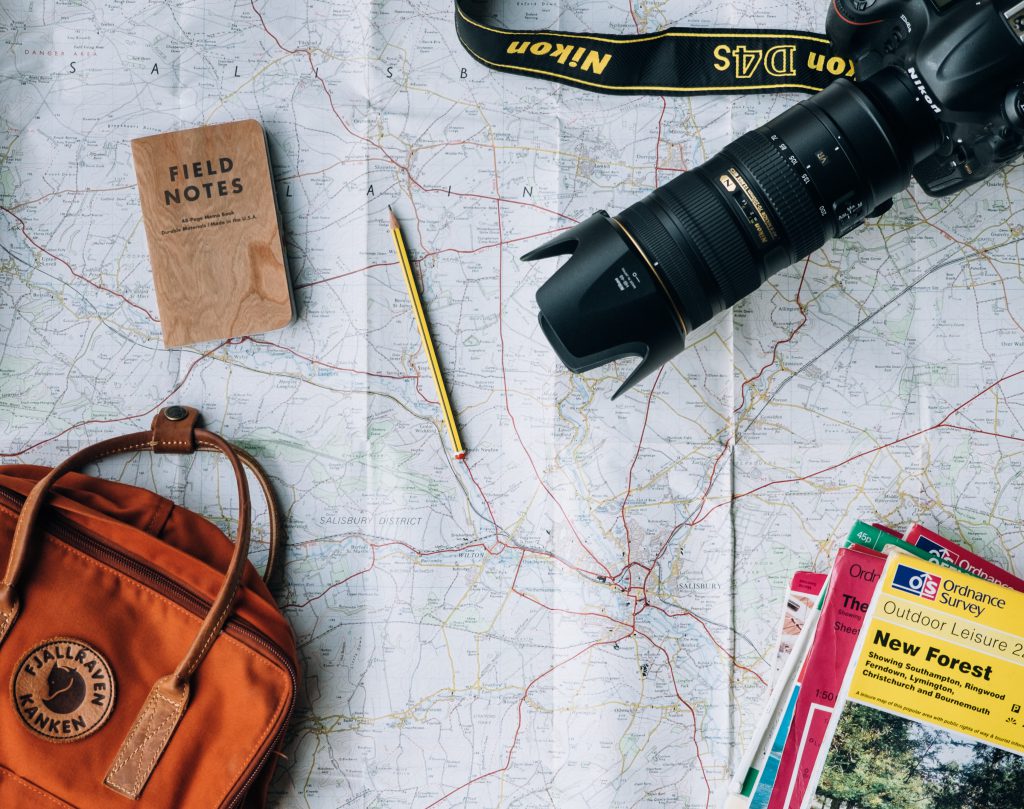
Some things, like travelling, can be hard enough to plan at the best of times. Throw a stoma into the mix and it suddenly seems even more daunting!
Packing and planning
I love a list, so planning my packing is quite therapeutic for me! I usually separate it into things like clothes, toiletries, tech, and the miscellaneous items I might need like plasters and safety pins! Having a chronic illness and a stoma means that I have additional lists; medications and stoma supplies. I always pack lots of rehydration mix sachets. Activities, sun, and alcohol can all increase the risk of dehydration!
Packing more supplies than you would normally need is always the safer option – better to have them and not need them than to need them and not have them! If you’re going to be separated from your luggage because you’re going abroad, it’s a good idea to split your supplies between cases, just in case anything gets lost! It’s also wise to take a spares kit in your hand luggage – don’t forget to pre-cut the bags and leave the scissors out!
If you’re planning on catching some sun or swimming, and you’re wondering what to wear then the answer is simple. Wear whatever you feel comfortable in. Many bikinis are high waisted at the moment, and patterns and frills are good for hiding things too. Then there’s bag covers and sarongs, or, you could just be free! I can assure you that most people are too busy worrying about themselves to even take any notice of you!
If you’re flying, request an aisle seat near the toilets if possible. Some airlines will also allow additional baggage to accommodate medical supplies, so it’s always worth checking!
The journey
I usually plan what and when I eat so that my stoma isn’t too active on the journey. The last thing I do before I leave the house is empty my bag and my bladder.
When we go anywhere in the car, I like to know the route and the service stations in case I need to access a toilet. Google maps is perfect for this!
The last time we went on a plane, airport security did actually pick up my bag on the scanner. I was surprised by this, but it wasn’t an issue. A lady literally came and ran her hands around my waistband and then let me go. She actually looked far more embarrassed than me! That said, some people would obviously be uncomfortable. Fittleworth can provide a pocket-sized ostomy travel certificate that explains, in various languages, what your ostomy appliances and medications are for and why you are carrying them. This can help to avoid awkward questions at customs checkpoints. It also ensures that any form of examination takes place in complete privacy.
You can also get a sunflower lanyard if needed. This makes staff aware that the wearer has invisible needs, which may require additional support, help or a little more time. Sunflower lanyards can be obtained at any of the airport’s assistance desks, or online.
Again, the last thing I do before I board a plane is pop to the loo to make sure I’m empty.
When you arrive
I went to Tenby not long after I’d recovered from my last stoma surgery, and when I’d changed my bag in the bathroom, I realised I didn’t know where the best place was to put the disposal bag! I asked online, and the general consensus was that it should just go in the little bin in the bathroom. The cleaner comes in daily anyway, so they should empty it if it has anything in it! If they don’t then you can request that they do.
Store your bags somewhere cool and dry. Heat may damage the adhesive.
Remember that additional activities might equal additional bags. If you’re doing something that causes you to sweat more, this may affect the adhesion of your baseplate. Equally, just laying on the beach may affect adhesion if you’re sweating. You will need to ensure that your skin is completely dry before attaching a new baseplate. A hairdryer on a cool setting may be helpful for this! Always apply sunscreen after attaching your bag!
You will also need to be more aware of your hydration levels, as warmer weather, doing more activities, alcohol consumption etc will all contribute to dehydration. I tend to take rehydration sachets with me because I usually have to replace my electrolytes for sufficient hydration. Everyone is different, so it’s worth chatting with your stoma nurse. Bottled water is the safest option. You will need to be mindful of this all of the time, like when brushing your teeth and ordering drinks with ice. I actually made the very rookie error of thinking that because I hadn’t gone far (Ireland), I could drink the water safely. I couldn’t, and my stomach was very upset with me!
For me, preparation makes me feel safe. I will always have my spare supplies and I usually scout for toilets before going anywhere – many apps are available this!
The most important thing is to enjoy yourself, but don’t push yourself too hard or put any pressure on yourself to do anything you don’t feel you want to. Holidays can sometimes make us feel braver because we’re in a place where no one knows us. That might mean that you feel you can show your bag on the beach or attempt an activity that you wouldn’t normally do. If that’s the case then that’s great, but if it’s not, that’s great too! Just do you!
About the advice and opinions of our bloggers
We hope you enjoyed this article from our guest blogger. They are expressing their views or knowledge on a topic because of their experience & background. Some of the opinions expressed may not reflect the views of Fittleworth or your NHS professional.
It goes without saying, but this is not clinical advice. Each person will have an individual set of medical factors to consider. So please do not to make significant changes to your diet, exercise or treatments before consulting with a NHS professional.
Sahara was admitted to hospital and diagnosed with Ulcerative Colitis at the age of 19,  after just two weeks of being incredibly unwell. One week later, she had emergency surgery to remove her colon and rectum, and had her first ileostomy. A turbulent journey followed; a multitude of treatments, complications, seven surgeries, a failed J-Pouch, and three ileostomies later, she is living with a permanent stoma and is a pro-active IBD and ostomy advocate.
after just two weeks of being incredibly unwell. One week later, she had emergency surgery to remove her colon and rectum, and had her first ileostomy. A turbulent journey followed; a multitude of treatments, complications, seven surgeries, a failed J-Pouch, and three ileostomies later, she is living with a permanent stoma and is a pro-active IBD and ostomy advocate.
Sahara joined the online IBD and ostomy community in 2014, and it very quickly became apparent to her that whilst awareness is important, even more important than that is providing support to others as they navigate the stormy waters of life with IBD, or an ostomy.
She runs #IBDSuperHeroes fundraising and awareness campaign, and the Facebook support group. She is a blogger for InflammatortyBowelDisease.net and an IBD Patient Consultant for merakoi – bridging the gap between patients and healthcare. She gets involved with research whenever she can, and is a volunteer for Cure Crohn’s Colitis, where she donates her time and expertise in social media marketing and content creation.
